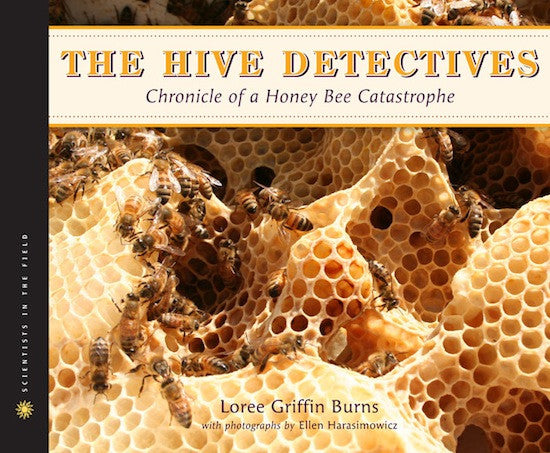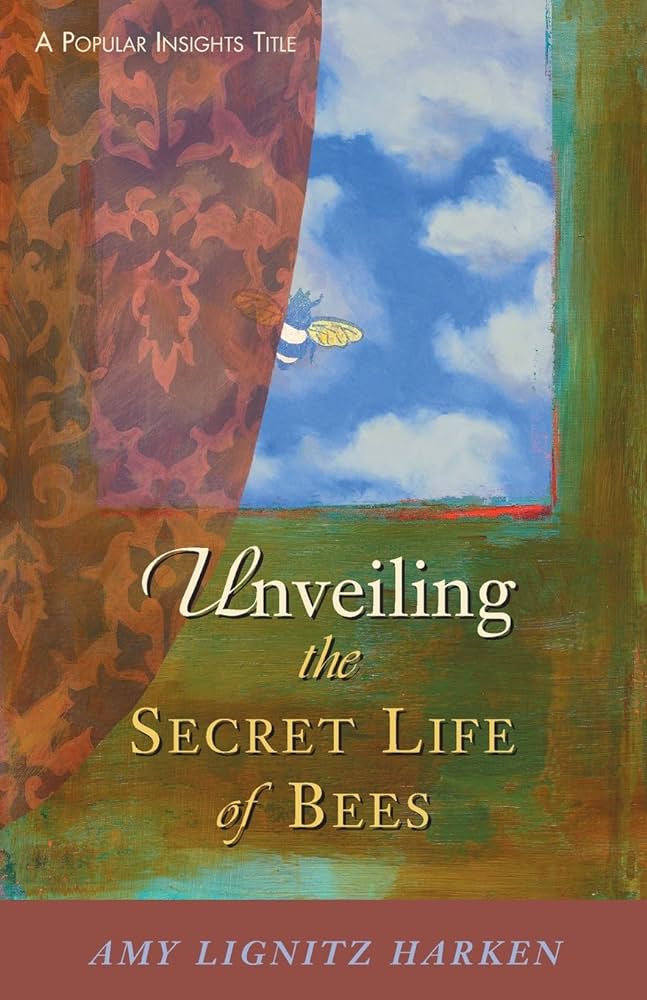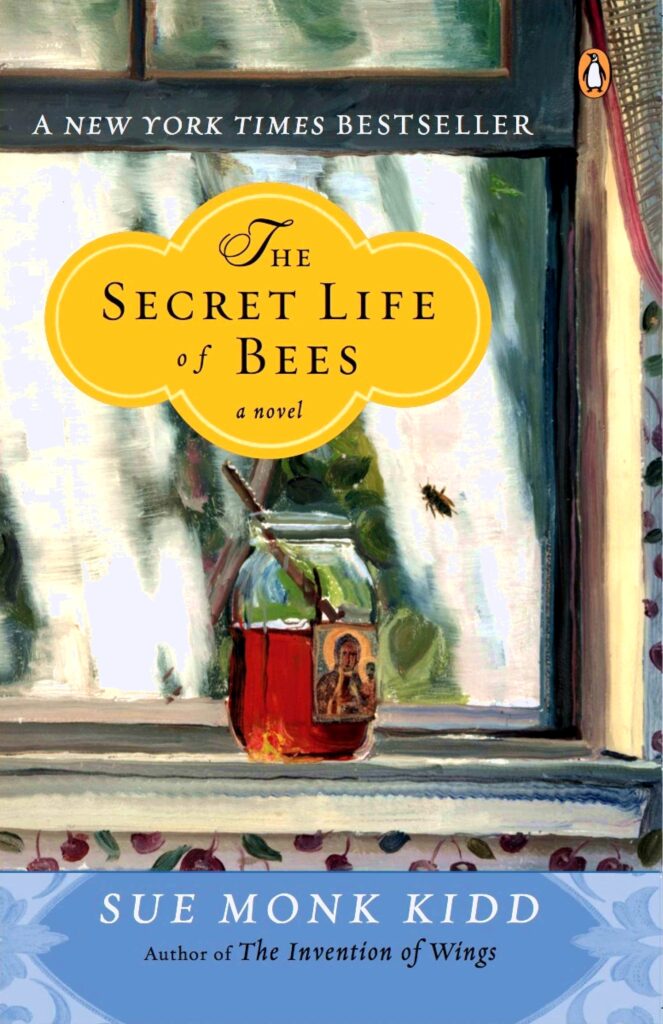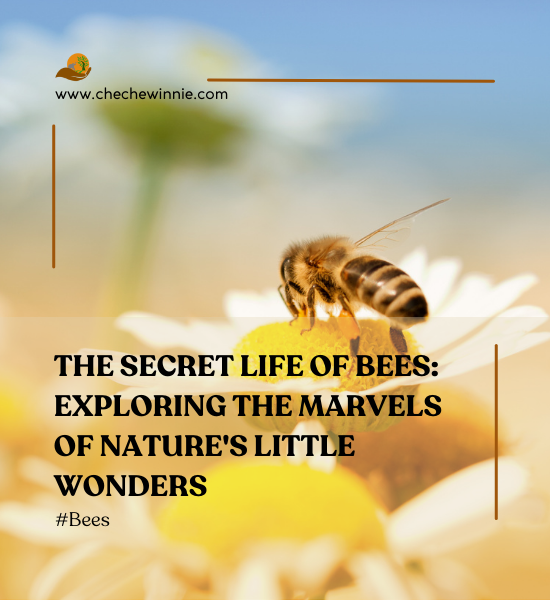
Imagine stepping into the bustling world of a beehive, surrounded by the captivating buzz of activity and the sweet scent of honey. In “The Secret Life of Bees: Unveiling the Mysteries of the Hive,” you are invited on a remarkable journey that peels back the layers of mystery surrounding these incredible creatures. Discover the intricate social structure, the incredible communication methods, and the mesmerizing dance of the honeybees as they work together to create one of nature’s most extraordinary treasures. Prepare to be enchanted as we delve into the secrets of the hive and unearth the hidden wonders that lie within.
The Life Cycle of Bees
The Different Stages of a Bee’s Life
When it comes to understanding the life cycle of bees, there are three main stages: the egg, the larva, and the adult bee. The life cycle begins with the queen bee laying an egg, which is usually laid within the honeycomb cells of the hive. The egg is extremely tiny and almost impossible to see with the naked eye.
Next comes the larva stage, wherein the egg hatches and becomes a larva. At this stage, the larva is fed a protein-rich substance called royal jelly by the worker bees. The royal jelly plays a vital role in the development of the larva. As the larva grows, it molts several times and goes through different instar stages.
After the larval stage, the bee enters the pupa stage. During this time, the larva undergoes a metamorphosis inside a capped cell. Inside this cell, the bee undergoes incredible changes, transforming from a small, worm-like creature into a fully developed adult bee.
Finally, the adult bee emerges from the capped cell. At this stage, the bee’s wings are still wet and soft, so it must wait for them to dry before it can take its first flight. Once the wings are dry, the bee is ready to embark on its duties within the hive.
The Roles of Bees Within the Hive
Within the hive, various bees have different responsibilities depending on their age and physical characteristics. The queen bee, as the name suggests, is responsible for laying eggs and ensuring the survival of the colony. She is the only reproductive female in the hive and can lay up to 2,000 eggs per day.
Worker bees, on the other hand, take on a range of tasks. Young worker bees are responsible for cleaning and feeding the larvae and maintaining the hive’s cleanliness. As they grow older, their roles expand to include tasks such as building and repairing honeycomb, collecting nectar and pollen, and guarding the hive.
Male bees, also known as drones, have a singular purpose: mating with a new queen. However, they are expelled from the hive during the winter months when resources are scarce.
The Organization of the Hive
The Architecture of the Hive
The architecture of a beehive is an incredible feat of nature. Bees construct their hives with beeswax secreted from their own bodies. The hexagonal shape of the honeycomb cells is not only aesthetically pleasing but also highly efficient in terms of space utilization and strength. This design allows for maximum storage capacity while minimizing the amount of beeswax needed.
Each individual cell serves a specific purpose within the hive. Some cells are used for storing honey, while others are used for raising brood or storing pollen. The meticulous construction of the honeycomb facilitates the smooth functioning of the hive and contributes to its overall organization.
The Division of Labor Among Bees
The division of labor among bees is a marvel to behold. Worker bees take on different tasks depending on their age and physical capabilities. Young worker bees start by performing housekeeping duties, such as cleaning cells and attending to the queen and larvae.
As they mature, worker bees transition into different roles. Some become builders, constructing and repairing the honeycomb. Others become foragers, venturing outside the hive to collect nectar and pollen. There are also guard bees who protect the hive from intruders and nurse bees who tend to the needs of the developing brood.
This intricate division of labor ensures that each task is carried out efficiently, allowing the hive to thrive and function as a cohesive unit.
The Queen Bee’s Role
The queen bee holds a position of utmost importance within the hive. Her primary responsibility is to lay eggs, ensuring the survival and growth of the colony. She emits pheromones that help maintain unity and order within the hive, suppressing the development of ovaries in the worker bees and maintaining the dominance of the current queen.
The queen bee is also significant in the process of swarming, which occurs when the colony decides to divide and create a new colony. During swarming, the queen bee leads a portion of the worker bees to establish a new hive, leaving the old queen and a portion of the workers behind to continue their duties.

This image is property of Amazon.com.
Communication within the Hive
The Language of Bees
Communication within the hive is essential for the smooth functioning of the colony. Bees use a combination of physical movements, sounds, and chemical signals to convey information to each other. These intricate communication methods allow the bees to coordinate their actions and share important information for the survival of the colony.
The Waggle Dance
One of the most fascinating forms of communication among bees is the waggle dance. This unique dance is performed by foraging worker bees to communicate the location and distance of a food source to other members of the colony. The waggle dance involves specific movements, such as figure-eight patterns and waggling motions, which convey precise information about the direction and quality of the food source.
Through the waggle dance, bees share crucial information with their fellow workers, enabling them to efficiently locate and collect nectar and pollen from various food sources.
Pheromones and Their Significance
Pheromones play a crucial role in communication within the hive. Bees produce and release a variety of pheromones that convey different messages to their hive mates. These chemical signals help coordinate the activities of the colony, regulate the behavior of individual bees, and maintain harmony within the hive.
For example, queen-produced pheromones serve as a signal of the queen’s presence and status. They help suppress the development of new queen cells, maintain female worker sterility, and promote coordinated activities among the worker bees. Other pheromones are used to indicate danger, mark food sources, or facilitate mating.
The intricate chemical communication system of bees ensures efficient coordination and cooperation within the hive, contributing to the overall success and survival of the colony.
Foraging for Food
The Role of Worker Bees in Collecting Nectar and Pollen
Worker bees play a vital role in foraging for the necessary resources of nectar and pollen. These resources are essential for the production of honey, as well as the survival and growth of the colony.
When worker bees venture out of the hive in search of food, they use their excellent vision and sense of smell to locate flowers that provide nectar and pollen. They have specialized appendages, such as proboscis, that allow them to extract nectar from flowers and pollen baskets on their hind legs to carry pollen back to the hive.
Navigation Skills of Bees
One of the most fascinating abilities of bees is their remarkable navigation skills. Bees use various techniques to find their way back to the hive after foraging for food.
First, they rely on landmarks, such as recognizable objects or patterns in the environment, to help them orient themselves. Additionally, bees possess a magnetic compass that allows them to detect the Earth’s magnetic field and navigate accordingly. They also have the ability to remember the location of the hive in relation to the position of the sun and the time of day.
By combining these techniques, bees can navigate with remarkable accuracy, ensuring their safe return to the hive with the collected resources.
The Pollination Process
While foraging for food, bees inadvertently play a crucial role in the process of pollination. As bees move from flower to flower in search of nectar and pollen, they transfer pollen from the male reproductive parts (stamens) to the female reproductive parts (pistils) of flowers. This transfer of pollen is essential for fertilization and the production of seeds and fruits.
The pollination process not only ensures the reproduction of plants but also contributes to the biodiversity of ecosystems. Bees are responsible for pollinating a significant proportion of flowering plants, including many food crops that humans rely on for sustenance.

This image is property of Amazon.com.
Honey Production
How Bees Make Honey
Honey production is an intricate and fascinating process carried out by bees within the hive. Worker bees are primarily responsible for collecting nectar, which serves as the raw material for honey.
When bees find a suitable nectar source, they ingest the nectar and store it in their honey stomach, a separate compartment in their digestive system. Enzymes in the honey stomach begin the process of breaking down the complex sugars in the nectar into simpler sugars.
Once back at the hive, the worker bee regurgitates the nectar into a honeycomb cell. Through a process called regurgitation and evaporation, the bee repeatedly passes the nectar between its mouth and honey stomach, reducing the water content and thickening the nectar into honey. The bees further enhance the honey-making process by fanning their wings to promote evaporation.
Finally, when the honey reaches the desired consistency, the bees cap the honeycomb cell with wax, sealing the honey for later consumption by the hive.
The Benefits of Honey for Bees
Honey serves as a vital source of energy and nutrition for bees. It provides carbohydrates as an energy source and contains essential nutrients, including amino acids, vitamins, and minerals.
During times of scarcity, such as winter or periods of drought, bees rely on the stored honey to survive when flowers are not readily available. The hive’s honey reserves also play a crucial role in sustaining the colony during the early stages of colony development, when the bees are establishing themselves and building up their numbers.
Additionally, honey has natural antimicrobial properties, which help protect the hive from certain pathogens and maintain the overall health of the colony.
Swarming Behavior
Why Bees Swarm
Swarming is a natural process in the life cycle of a colony. Bees swarm when the hive becomes overcrowded and resources become scarce. The queen bee, accompanied by a large portion of the worker bees, will leave the hive in search of a new location to establish a new colony. This division aims to ease the strain on resources and prevent overcrowding.
Swarming is also a mechanism of reproduction for bees. During the process, the queen bee and the departing worker bees carry with them genetic material from the original colony, allowing for the establishment of genetically diverse and resilient colonies.
The Process of Swarming
Before swarming takes place, several preparations occur within the hive. The worker bees construct queen cells, special cells that are larger and elongated, to raise new queens. The existing queen lays eggs in these queen cells, which will eventually become the new queens after pupation.
When the new queens are ready to emerge, the old queen and a large group of worker bees leave the hive in a swirling mass. This swarm forms a cluster, typically on a nearby tree branch, while scout bees search for a suitable location to establish a new hive.
Once a suitable location is found, the swarm flies to the chosen spot, with the queen leading the way. The worker bees then begin constructing a new hive using beeswax secreted from their bodies.
The Formation of New Colonies
After the swarm has established a new hive, the worker bees start building comb and collecting nectar and pollen to sustain the new colony. The first priority is to establish a stable brood nest and ensure the survival of the new queen.
The new queen will take on the responsibility of laying eggs and continuing the growth of the colony. As the colony establishes itself and grows in size, worker bees will take on their respective roles within the hive, replicating the organization and division of labor seen in the original hive.
This image is property of cloud.firebrandtech.com.
Hive Defense Mechanisms
Guard Bees and Their Role
Guard bees play a critical role in defending the hive against intruders and potential threats. These specialized worker bees patrol the entrance of the hive, identifying potential enemies and repelling them using aggression and stinging.
Guard bees are equipped with stingers, which they use as a defense mechanism to protect the hive. When a guard bee detects a threat, it will sting the intruder, injecting venom that acts as a deterrent. However, the stinger has barbs that cause it to become embedded in the intruder’s skin, resulting in the loss of the stinger and the death of the guard bee.
This selfless act of defending the hive indicates the level of dedication and loyalty that worker bees exhibit towards their colony.
The Sting of a Honey Bee
The sting of a honey bee can cause discomfort and pain to humans. When a honey bee stings, it releases a venomous substance into the skin, which can trigger an inflammatory response and produce a localized reaction. This reaction may result in redness, swelling, and mild to moderate pain around the sting site.
It’s important to note that not all bees sting, and those that do only sting when they perceive a threat. Worker bees, which are females, are the ones capable of stinging, while male bees (drones) lack a stinger altogether.
If stung by a honey bee, it is advisable to remove the stinger as quickly as possible using a scraping motion rather than squeezing it. Applying a cold compress, taking over-the-counter pain relievers, or using topical creams can help alleviate the discomfort associated with a bee sting.
Beekeeping Practices
History and Importance of Beekeeping
Beekeeping, also known as apiculture, has a long and rich history dating back thousands of years. Ancient civilizations recognized the value of bees and their honey, and various methods of managing bees and harvesting honey were developed throughout the centuries.
Today, beekeeping plays a vital role in not only supporting the survival of honey bees but also contributing to agricultural practices and the production of honey and other bee-derived products. Beekeepers provide a safe and suitable environment for bees to thrive, manage hive populations, and ensure optimal conditions for honey production.
How Beekeepers Manage Hives
Beekeepers employ various techniques and tools to manage their hives effectively. Regular hive inspections allow beekeepers to monitor the health and productivity of the colony, ensuring early detection and treatment of any diseases or pests that may affect the bees.
Beekeepers also undertake swarm prevention measures to prevent the loss of bees during the swarming process. This may involve techniques such as dividing large hives or providing additional space within the hive to accommodate the growing population.
Additionally, beekeepers may engage in supplementary feeding of their bees during periods of scarcity, providing them with sugar water or other substances to sustain them when natural food sources are limited.
Challenges Faced by Beekeepers
Beekeepers face numerous challenges in maintaining healthy and productive bee colonies. One significant challenge is the presence of pests and diseases that can impact the overall well-being of bees. Varroa mites, for example, are a destructive pest that can weaken colonies and transmit harmful viruses.
Other challenges include habitat loss, the indiscriminate use of pesticides and insecticides, and the impact of climate change on floral resources and weather patterns. These factors can all contribute to declining bee populations and pose significant threats to the survival of honey bees.
To mitigate these challenges, beekeepers work closely with researchers, conservationists, and policymakers to develop and implement best practices. These practices prioritize the health and well-being of bee colonies and aim to protect and conserve these essential pollinators.

This image is property of chechewinnie.com.
The Importance of Bees for the Environment
The Role of Bees in Pollination
Bees play a crucial role in pollination, which is essential for the reproduction of flowering plants. As bees move from flower to flower, they transfer pollen, facilitating fertilization and the production of seeds and fruits. This process ensures the survival of plant species and contributes to the biodiversity of ecosystems.
Bees are particularly effective pollinators due to their foraging habits, hairy bodies, and specialized mechanisms for carrying and transferring pollen. They are responsible for pollinating a wide range of flowering plants, including many crops that humans rely on for food, such as apples, almonds, and blueberries.
Threats to Bee Populations
Bee populations worldwide are facing numerous threats that have led to significant declines in their numbers. Habitat loss, resulting from urbanization and the conversion of natural habitats into agricultural lands, poses a significant challenge for bees. As their foraging and nesting habitats disappear, bees struggle to find adequate food sources and suitable nesting sites.
The use of pesticides and insecticides in agriculture also poses a threat to bee populations. Bees can be exposed to these chemicals either through direct contact with treated crops or through contaminated nectar and pollen, leading to adverse effects on their health and behavior.
Climate change also affects bee populations by altering the timing and availability of floral resources. Changes in rainfall patterns, temperature fluctuations, and the loss of flowering plants can disrupt the synchronized relationship between bees and their food sources.
Conservation Efforts for Bees
Recognizing the importance of bees for ecosystems and food production, numerous conservation efforts are focused on protecting and restoring bee populations. These efforts involve a combination of habitat conservation, reducing pesticide usage, and raising awareness about the importance of bees.
Conservation organizations, researchers, and beekeepers work together to create and maintain pollinator-friendly habitats, including planting native wildflowers, shrubs, and trees. These initiatives aim to provide bees with ample foraging opportunities and suitable nesting sites.
Furthermore, there is a growing movement to promote sustainable farming practices that prioritize the health and well-being of bees and other pollinators. This includes the reduction of pesticide use, the implementation of integrated pest management strategies, and the preservation of natural habitats within agricultural landscapes.
By valuing and safeguarding bees and their habitats, we can contribute to their conservation and ensure their vital contributions to ecosystems and food production continue for generations to come.
Bee Myths and Folklore
Bees in Ancient Mythology and Religion
Throughout history, bees have been regarded with great significance in mythology and religion. Ancient cultures, such as the Greeks and the Egyptians, often associated bees with various deities and believed they possessed divine qualities.
In Greek mythology, bees were associated with the goddess Artemis, who was often depicted with bees or a honeycomb. They were also linked to the god Apollo and considered messengers between the divine and mortal realms.
The Egyptians revered bees as symbols of royalty and fertility. The bee hieroglyph was used to represent the pharaoh, and honey was considered a sacred food associated with resurrection and eternal life.
Superstitions and Beliefs Surrounding Bees
Bees have long been the subject of superstitions and beliefs in different cultures around the world. In some regions, it was believed that bees carried messages between the living and the dead, or that a swarm of bees was an omen of good fortune or the arrival of a visitor.
In folklore, bees were often seen as bearers of wisdom and intelligence. It was believed that if a bee landed on someone’s hand, it brought good luck and prosperity. Additionally, the sight of bees swarming in trees or near a house was interpreted as a sign of fertility or an impending marriage.
These beliefs and superstitions reflect the deep-rooted fascination and respect for bees that has persisted throughout human history.
In conclusion, the life cycle of bees and the functioning of the hive are complex and fascinating. Bees demonstrate remarkable organization, communication, and division of labor within their colonies. Their role as pollinators is crucial for the reproduction of flowering plants and the production of many food crops. Beekeeping practices and conservation efforts are important in ensuring the survival of bees and their contribution to the environment. By understanding and appreciating the secrets of the hive, we gain a deeper appreciation for the vital role that bees play in our world.

This image is property of cdn.shopify.com.
